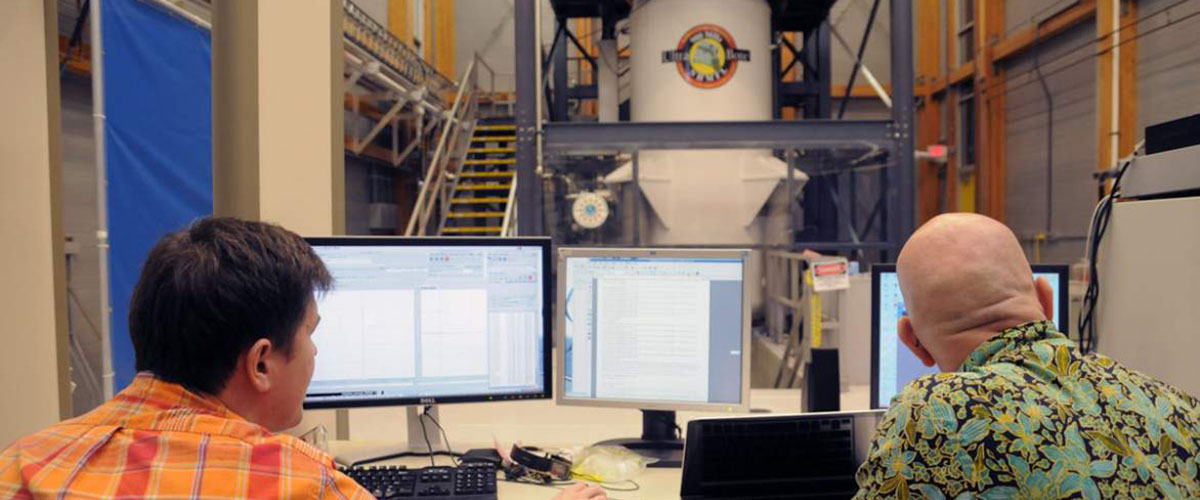
With a field strength of 21.1 tesla, this is the strongest MRI scanner in the world.
Designed and built by the lab’s Magnet Science & Technology department, this magnet is used for nuclear magnetic resonance research. The magnet is used both for imaging and for spectroscopy, helping scientists look inside small living animals such as rodents, birds and insects and in the study of TB, flu and neurodegenerative disease. The magnet is also used by chemists to determine the composition of solids (solid state NMR) and liquids (solution state NMR) with measuring devices called spectrometers.
While hospital MRI's are large enough to fit humans inside, this magnet's "ultra wide bore" measures around 105 millimeters (about 4 inches), about the width of an orange. While that might not sound like much, it is more than three times larger than the bore of our 45 tesla hybrid magnet and is in fact the largest in the world for this type of magnet, making it possible for scientists to conduct pre-clinical imaging on small animals. Other NMR/MRI magnets of comparable field have typical bore diameters around 50-85 mm.
Since its first charge in July 2004, this instrument has been continually conducting 284 amps of electrical current by itself – through some 152 kilometers (95 miles) of superconducting cable. Because it is superconducting, the current runs without resistance, so no outside energy source is needed. However, large amounts of liquid helium, an extremely cold substance, are needed to keep the magnet at a superconducting temperature. The cryostat contains 2,400 liters (634 gallons) of liquid helium, which keeps the magnet at 1.7 Kelvin (a scientific measurement equivalent to -456.61 degrees Fahrenheit or -271.45 degrees Celsius).
Magnets used for NMR are often referred to by their frequency rather than their magnetic field strength. That’s why this is called the 900 MHz. The instrument does spectroscopy and imaging by identifying the hydrogen atoms in the sample. It identifies these atoms by targeting energy at them in the form of radio waves. These waves must be of a very specific frequency for the hydrogen atom to respond. For a 21.1 tesla magnet, that frequency – the resonant frequency of a hydrogen proton – is 900 MHz.
Learn more about the 900MHz or request magnet time on this unique instrument.
| Strength | 21.1 tesla |
| Type | Superconducting |
| Bore size | 105 mm (~4 inches) |
| Online since | July 2004 |
| Cost | $16 million |
| Weight | 13,600 kg (15 tons) |
| Height | About 5 meters (16 feet) |
| Operating temperature | -271.45 ° C (-456.61 ° F) |
| Length of superconducting cable | 152 km (95 miles) |
Last modified on 31 December 2022